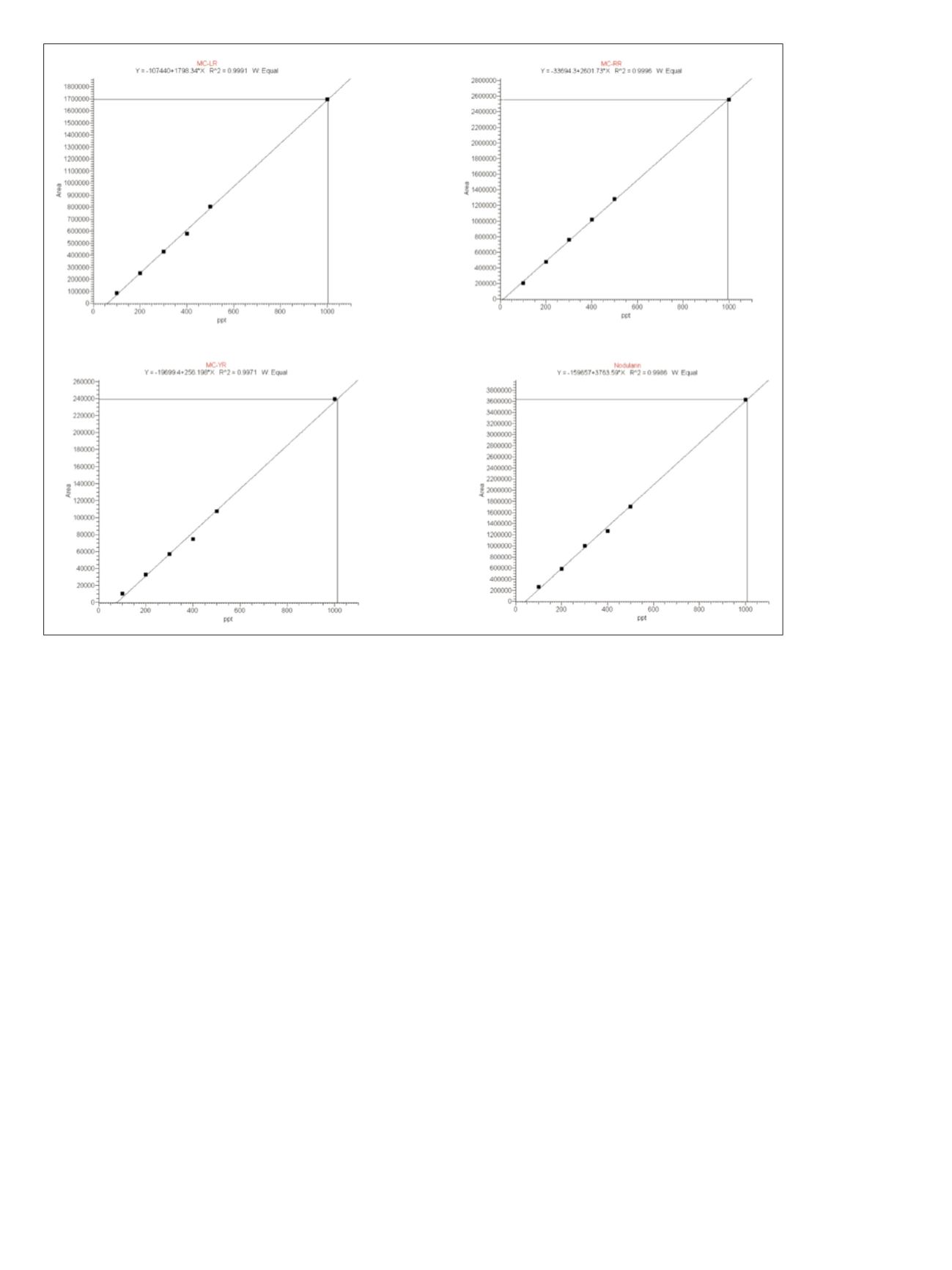

7
Recovery Rate and Detection Limit
To assess the recovery rate of the optimized method, seven
20 mL samples were taken from the 1 L sample of the raw
water collected from the Daecheong Dam in which the
target toxins were not detected. Then, microcystin-LR,
-RR, and -YR and nodularin were added to prepare a
solution with 0.1 ng/mL of each. The solution was then
filtered through the 0.45 μm glass fiber filter and repeated
analyses were conducted to measure the recovery rate for
each toxin. As shown in Table 4, the recovery rates for
microcystin-LR, -RR, and -YR and nodularin were
113.7%, 70.3%, 103.7%, and 83.9%, respectively. The
recovery rates for the three types of microcystin toxins in
the conventional SPE method were reported to be 70%
to 110%.
13,14
Also, as shown in Table 4, the degree of
precision of this method was calculated to be 2.5-10.9%.
The method detection limit (MDL) was 0.009-0.035 ng/mL
and the practical quantitation limit (PQL) was
0.15–0.51 ng/mL. The MDL set forth in the WHO
guidelines with respect to microcystin-LR is a hundred
times higher than what was achieved. These results are
well below the guidelines set forth for microcystin-LR,
such as 1 ng/mL in Australia, 0.3 ng/mL in Japan,
0.5 ng/mL in Canada, and 1 ng/mL by WHO.
Figure 5. Calibration curve of microcystin-LR, RR, YR and nodularin
MC-RR
MC-YR
MC-LR
Nodularin



















